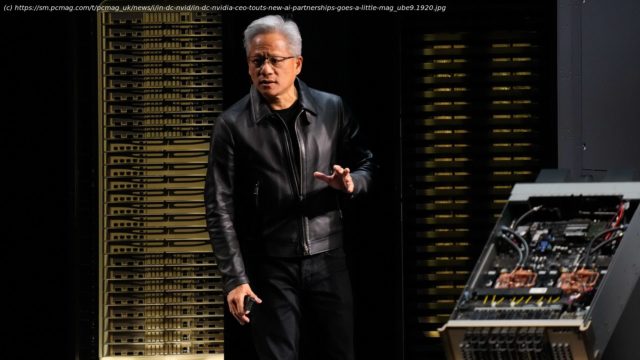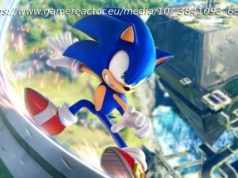Jensen Huang’s GTC DC keynote brought a nationalist tone to AI, 6G, quantum computing, robots, data centers, chip manufacturing, and more
Nvidia CEO Jensen Huang took the stage at the tech giant’s GTC Washington, DC conference wearing his usual black leather jacket, but he might as well have accessorized his go-to outfit with a red MAGA cap.
In a nearly two-hour long keynote at the Walter E. Washington Convention Center here, Huang hyped Nvidia’s current and coming progress in AI computing while announcing multiple new partners, with the Trump administration high on that list.
Huang took a nationalistic tone early on in the conference, which he called „the Super Bowl of AI.“ He announced the first in a series of partnerships, a venture with Nokia to build gear for the 6G networks that Nokia predicts will enter service by 2030.
The CEO said that after decades of American innovation, today’s wireless networks are now „largely deployed on foreign technologies“, going a step beyond earlier, bipartisan expressions of concern over Chinese and Russian influence in 5G standards and network hardware.
„That has to stop“, Huang said.
The Nokia partnership, which involves Nvidia investing $1 billion in that Finnish firm, will yield a platform called Arc—an acronym nesting other acronyms: „Aerial RAN (Radio Access Network) Computer“—which Huang described as a software-defined 6G base station.
„For the first time, we’ll be able to use AI technology, AI for RAN, to make radio communications more spectral-efficient“, he predicted.
(The GTC Wi-Fi itself could have used some optimization at that point, with attendees next to me complaining about it not working.)’A Fundamental Breakthrough‘
Next, Huang turned to a tech frontier he has been skeptical about before—quantum computing and its potential for exponentially more powerful processors if engineers can surmount its error-prone nature. „The industry has made a fundamental breakthrough“, he said, nodding to recent advances in making qubits—quantum’s equivalent of a bit in classical computing, except it’s much harder to work with—“coherent, stable, and error-corrected.“
Nvidia’s latest contribution to that field is a system architecture called NVQLink that can integrate a quantum processing unit with a GPU and a conventional CPU, integrating error correction for the fragile output of a quantum computer.






